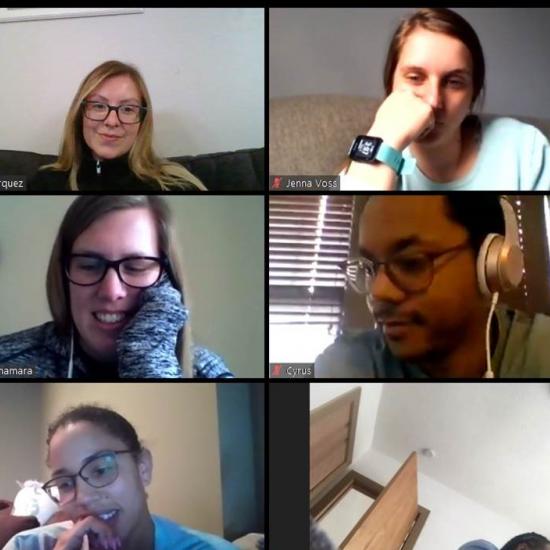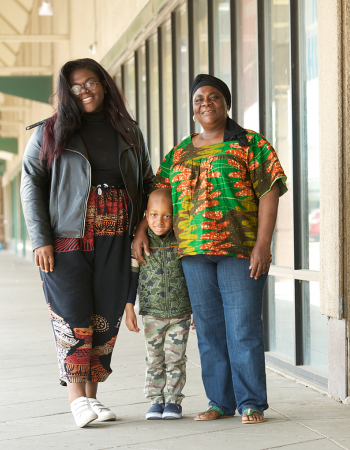With Schools Closed, Classroom Therapists Connect with Students and Families Using Telehealth
When Governor Tim Walz ordered schools across Minnesota closed to prevent the spread of the COVID-19 virus, therapists in an innovative mental health partnership at Wilder made quick adjustments to figure out how to bring a therapeutic classroom into students’ living rooms.
The Therapeutic Teaching Model is a partnership between Wilder and Intermediate School District 287. It began in 2018 to support mental health in students at the North Education Center in New Hope who need intense interventions to manage emotional and behavior challenges in the classroom. Wilder school-based therapists work directly in the classroom help students understand and cope with their emotions, and also offer a mental health and trauma-informed perspective to teachers and education assistants. Students receive individual and family therapy weekly, and a resource navigator provides families with access to services and resources.
Therapists, Students and Families Adjust to Telehealth During Pandemic
After the pandemic began, therapists who had worked in the classroom as a team with teachers and education assistants transitioned to provide individual and family skills therapy by telehealth. They collaborate with teachers and education assistants and coordinate schedules to help prevent families from feeling overwhelmed by too many video meetings.
Therapists are also working with families in new and different ways. “Telehealth has provided therapists with an opportunity to, figuratively, walk alongside caregivers as they navigate their day to day, in ways that may have never been shared,” says Cyrus Hair, a Wilder therapist who works in the Therapeutic Teaching Model.
New Innovations to Connect with Students
Therapists say the move to telehealth required a new level of innovation to create effective therapeutic interventions. They have used a variety of interventions to help students process their thoughts and feelings about the pandemic as well as distance learning. Therapists have used telehealth scavenger hunts, Minecraft explorations and pattycake with siblings, and have introduced toys from the play therapy room at Wilder to toys students have at home.
The team has also started milieu – or group – therapy with students, says Dr. Benita Amedee, the Wilder clinical supervisor who manages Wilder staff in the program. “We are working through ways to let the kids just be able to connect with one another,” Benita says. “Our team and families are adapting and trying to be as flexible as possible to make it work for families and students.”
Picture: Wilder staff who work in the Therapeutic Teaching Model gather for a video team meeting.

